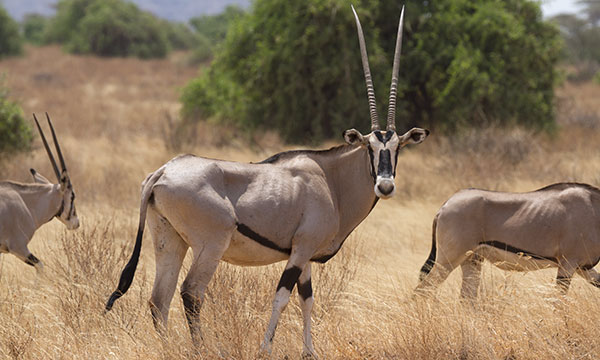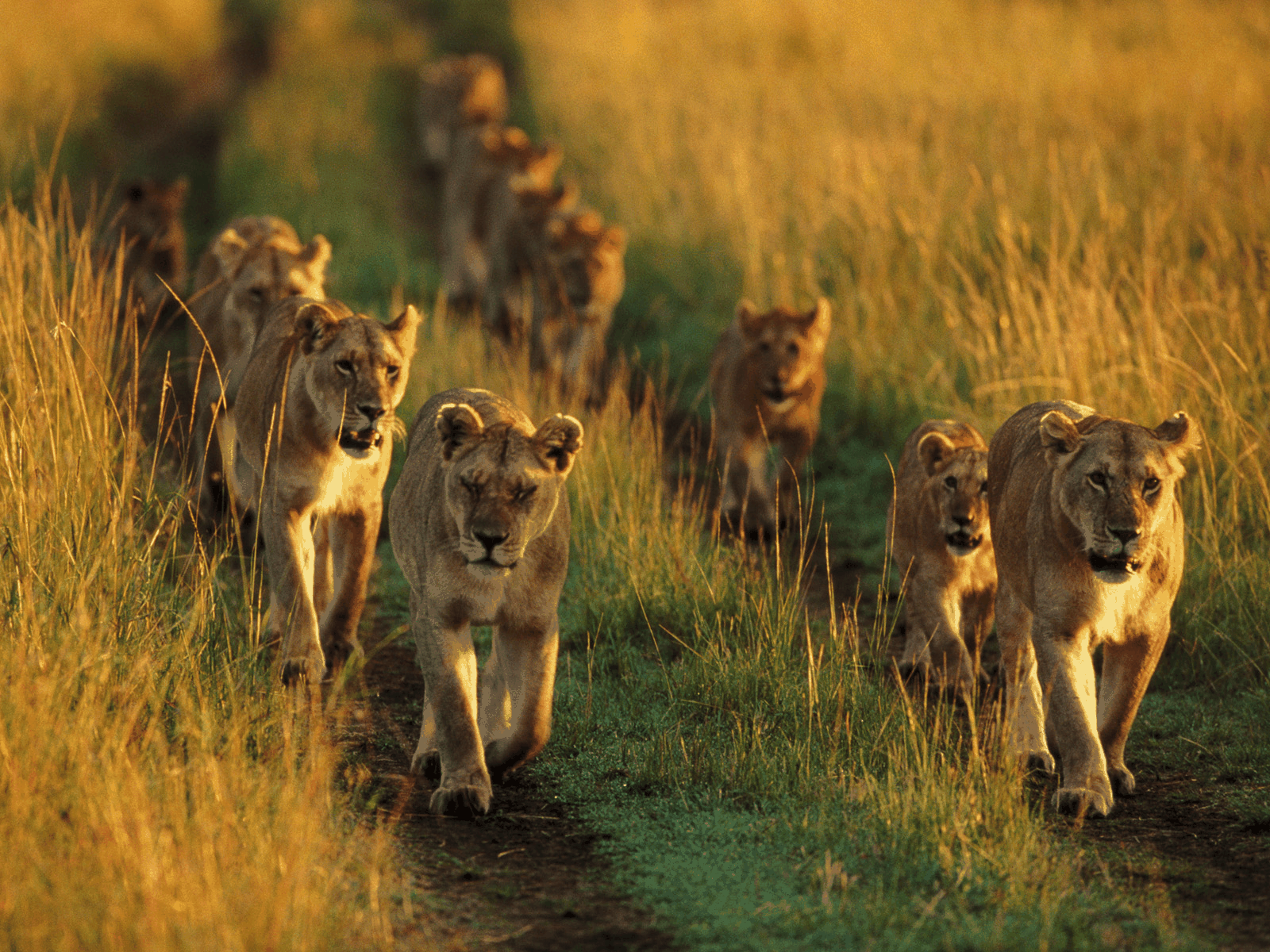
Find Out More About Beisa Oryx of Lolldaiga Hills Ranch
Author: Chloe Written: 2017-08-23
Carly Butynski, Department of Fish, Wildlife and Conservation Biology, Colorado State University, Fort Collins, Colorado describes more about one the most striking residents of Lolldaiga Hills Ranch.
The Beisa Oryx Oryx beisa beisa, is a timid but distinctive figure in the northern savannas and semi-arid bushlands of the property. Standing 1.1–1.2 m at the shoulder and weighing 116-188 kg (♀) and 167-209 kg (♂), it is a compact, robust antelope. Males and females are both easily distinguished by a rather square body, slender legs, muscular neck, tapered head, and long, slightly backswept horns (Kingdon 2015). The tawny-grey coat is broken by bold black and white demarcations on the face, ears, chest, forelegs, and flanks. A false mane, slightly darker than the body, stretches from poll to wither. As a point of identification, the ears are rounded and trim, and do not terminate in the black tassels that are unique to the Fringe-eared Oryx Oryx beisa callotis, the subspecies found south and east of the Tana River. In regards to the Beisa Oryx, there is little superficial difference between the sexes.
A behaviorally and socially dynamic species, herd composition and size varies on the Ranch. Smaller herds are frequently seen grazing and moving alongside Plains Zebra Equus quagga, from whom they likely gain a sense of security from predators. Herds are composed of individuals of varying age and sex, although adult females comprise the majority. While both sexes establish hierarchical relationships within their herd, there is invariably a dominant, sexually active, male. Group movement, however, is dictated by older females.
Herd dynamics are determined and maintained largely by ‘tournament displays’, during which individuals adopt a dramatic floating gallop, tilt their chin upward, and swing their horns laterally in time with their gait. Males ‘roar’ gutturally as they pace and stir plumes of dust. These displays most often occur around dawn and are performed frequently by sub-adults and young adults. The performance is likely a way of establishing rank within the herd, by gauging the response of higher-ranking individuals (Estes & Otte 1990, Kingdon 2015).
Read the full blog on the Lolldaiga Hills website
Reference: Estes, R. D. & Otte, D. 1990. The Behavior Guide to African Mammals. University of California Press, Berkeley, CA; Hillman Smith, A. K. K., Ojwang, G. O. & Mose, V. N. 2016. Systematic aerial sample survey of Laikipia County, 2016. Preliminary report. Unpublished report of the Laikipia Wildlife Forum and Mpala Research Centre, Nanyuki, Kenya; Kingdon, J. 2015. The Kingdon Field Guide to African Mammals (2nd edition). Bloomsbury, London; IUCN SSC Antelope Specialist Group. 2008. Oryx beisa ssp. beisa. The IUCN Red List of Threatened Species 2008: e.T136871A4347853. http://dx.doi.org/10.2305/IUCN.UK.2008.RLTS.T136871A4347853.en.

